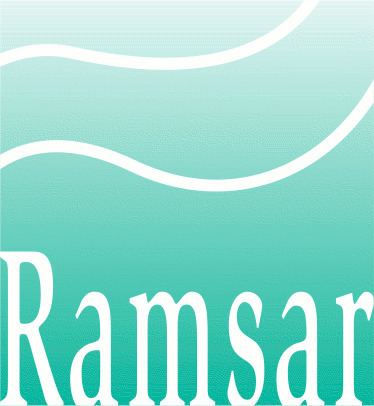Signed 2 February 1971 Effective 21 December 1975 | Parties 169 | |
 | ||
Condition Ratification by 7 states Depositary Director General of UNESCO | ||
The Ramsar Convention is an international treaty for the conservation and sustainable use of wetlands. It is also known as the Convention on Wetlands. It is named after the city of Ramsar in Iran, where the Convention was signed in 1971.
Contents
- List of Wetlands of International Importance the Ramsar List
- International cooperation
- International organization partners
- Other partners
- Bodies established by the Convention
- World Wetlands Day
- References
Every three years, representatives of the Contracting Parties meet as the Conference of the Contracting Parties (COP), the policy-making organ of the Convention which adopts decisions (Resolutions and Recommendations) to administer the work of the Convention and improve the way in which the Parties are able to implement its objectives.
The most recent COP12 was held in Punta del Este, Uruguay, in 2015. COP13 will take place in Dubai, United Arab Emirates, in 2018.
List of Wetlands of International Importance (the "Ramsar List")
The List of Wetlands of International Importance included 2,231 Ramsar Sites in March 2016 covering over 2.1 million square kilometres. The country with the highest number of Sites is the United Kingdom with 170, and the country with the greatest area of listed wetlands is Bolivia, with over 140,000 square kilometres.
The Ramsar Sites Information Service (RSIS) is a searchable database which provides information on each Ramsar Site.
International cooperation
As of 2016 there are 18 Transboundary Ramsar Sites.
As of 2016 there are 15 Ramsar Regional Initiatives covering regions of the Mediterranean, Asia, Africa and South America.
International organization partners
The Ramsar Convention works closely with six other organisations known as International Organization Partners (IOPs). These are:
These organizations support the work of the Convention by providing expert technical advice, helping implement field studies, and providing financial support. The IOPs also participate regularly as observers in all meetings of the Conference of the Parties and as full members of the Scientific and Technical Review Panel.
Other partners
The Convention collaborates with a network of partners:
Bodies established by the Convention
Conference of the Parties (COP)
Conference of the Parties (COP) is the Convention's governing body consisting of all governments that have ratified the treaty. This ultimate authority reviews progress under the Convention, identifies new priorities, and sets work plans for members. The COP can also make amendments to the Convention, create expert advisory bodies, review progress reports by member nations, and collaborate with other international organizations and agreements.
The Standing Committee
The Standing Committee is the intersessional executive body which represents the COP between its triennial meetings, within the framework of the decisions made by the COP. The Contracting Parties that are members of the Standing Committee are elected by each meeting of the COP to serve for the three years until the next one.
The Scientific and Technical Review Panel (STRP)
The Scientific and Technical Review Panel provides scientific and technical guidance to the Conference of the Parties, the Standing Committee, and the Ramsar Secretariat.
The Secretariat
The Secretariat carries out the day-to-day coordination of the Convention’s activities. It is based at the headquarters of the International Union for the Conservation of Nature (IUCN) in Gland, Switzerland.
The implementation of the Ramsar Convention is a continuing partnership between the Contracting Parties, the Standing Committee, and the Convention Secretariat, with the advice of the subsidiary expert body, the Scientific and Technical Review Panel (STRP), and the support of the International Organization Partners (IOPs).
World Wetlands Day
The 2nd of February each year is World Wetlands Day, marking the date of the adoption of the Convention on Wetlands on 2 February 1971. Established to raise awareness about the value of wetlands for humanity and the planet, WWD was celebrated for the first time in 1997 and has grown remarkably since then. In 2015 World Wetlands Day was celebrated in 59 countries.
